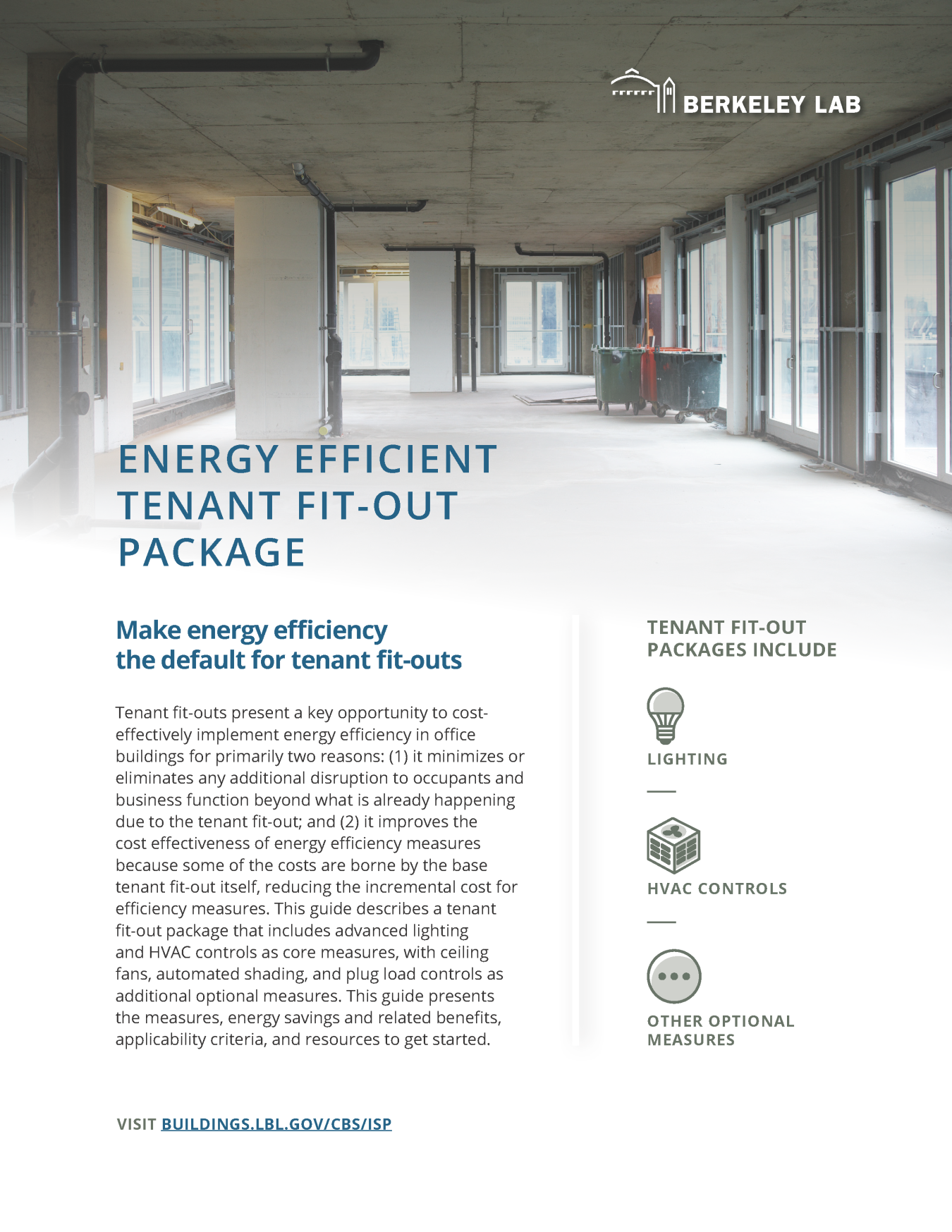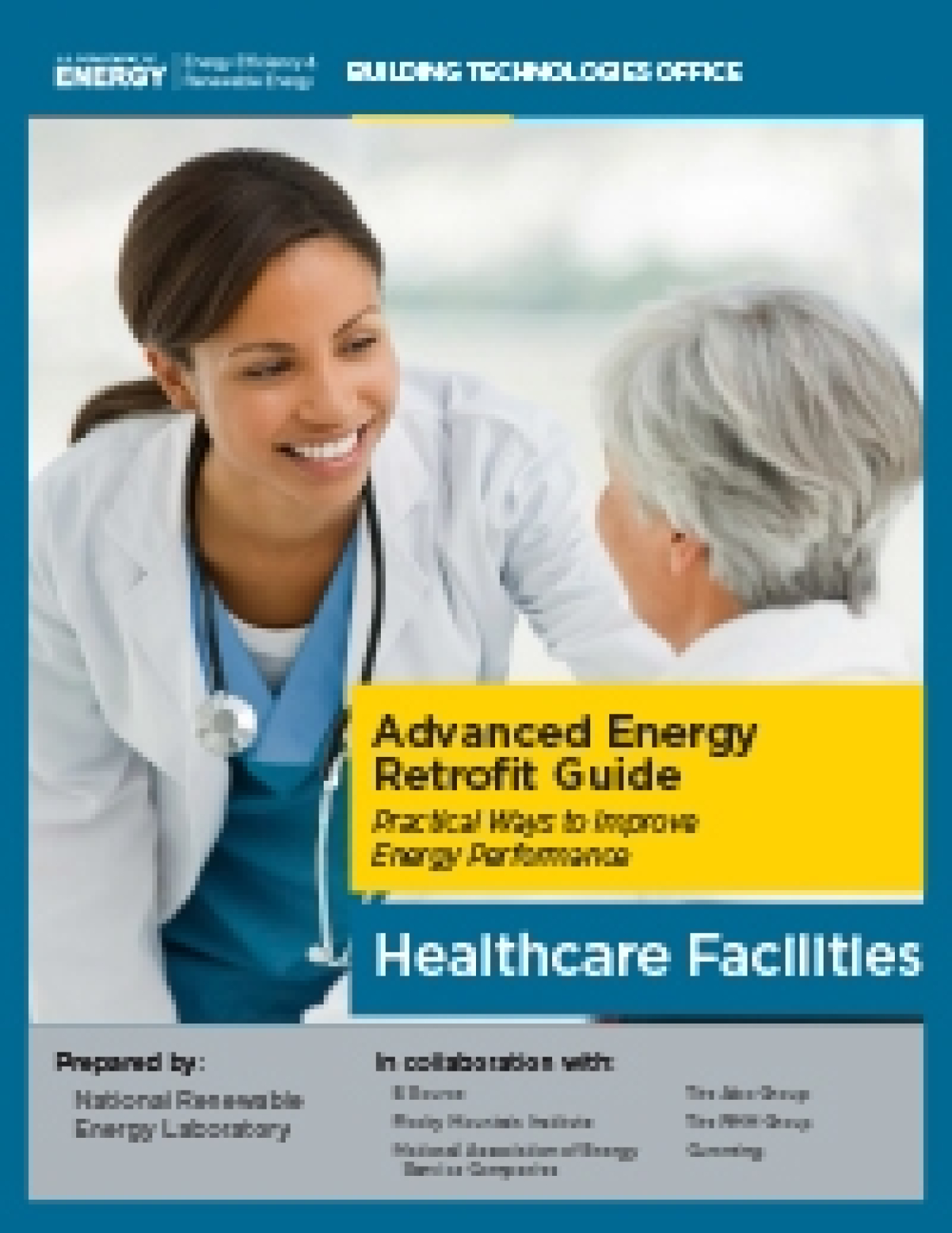CBI works with industry partners to develop design and decision support tools and resources that demonstrate scalable and replicable approaches to achieve high-performance energy-efficient buildings for a variety of building types. These tools and resources serve to inform and guide decision-makers to increase investment in energy efficiency and prepare the workforce to more efficiently design and build commercial buildings.
Large Commercial Building Boiler Electrification Guide
The Guidance Document on Space Heating Electrification for Large Commercial Buildings with Boilers summarizes key considerations for people seeking to retrofit existing large commercial and multifamily buildings, particularly those that currently heat spaces using fossil fuel-fired boilers. It is meant to provide an overview for building owners, contractors, and other stakeholders involved with heating, ventilation, and air-conditioning (HVAC) about possible design and purchasing decisions. The guide discusses electrification motivations, electric space-heating technologies, boiler retrofit evaluations and processes, and common project challenges and constraints. It also includes case studies that demonstrate best practices and lessons learned.
Advanced Energy Design Guides
Advanced Energy Design Guides (AEDGs) offer information on how to improve building energy performance. AEDGs represent an industry partnership between ASHRAE, AIA, IES, USGBC, and the national labs that gives DOE another pathway to share research and development insights on technologies and how to optimize their integration into whole-building systems for significant energy/cost savings. These guides provide building professionals with a mix of prescriptive and performance-based approaches to achieve a certain level of performance by climate zone and building type. This includes guidance on specific strategies, whole-building integration approaches, and examples of buildings with performance data showing that techniques work and that targets are achievable. Over a dozen AEDGs have been published to date, with the most recent focusing on zero energy buildings.
Guide to Energy Master Planning of High Performance Districts and Communities
The Guide to Energy Master Planning of High Performance Districts and Communities is a resource for developers, their consultants, city/regional planners, and others involved in the formation and execution of new and redevelopment multi-building projects. The focus is on thoughtful approaches to achieve high energy performance, including what analyses and considerations to incorporate when, with real-world examples. This guide was developed with partners throughout the United States to demonstrate how implementing district-scale high-performance strategies can be successful and scalable approaches to achieving deep energy savings that increase affordability, improve resilience, reduce emissions, and foster economic development.
Integrated System Packages for Commercial Buildings
Integrated System Packages for Commercial Buildings (ISPs) are pre-engineered combinations of energy-efficient technologies that are designed to be implemented seamlessly into the real estate lifecycle of commercial buildings. Work with LBNL created toolkits to provide step-by-step information on the technology packages from project applicability checklists to operations and maintenance manuals to make them more convenient to implement. By optimizing ISPs for routine real estate events, building owners and managers can non-intrusively achieve deep energy savings in existing buildings without sacrificing occupant comfort. The goal is to ensure persistent, deep, cost-effective savings while significantly reducing the effort and expertise required to deploy advanced integrated systems.
Advanced Energy Retrofit Guides
The Advanced Energy Retrofit Guides (AERGs) were created to help decision makers plan, design, and implement energy improvement projects in their facilities. With energy managers in mind, they present practical guidance for kick-starting the process and maintaining momentum throughout the project life cycle. The AERGs cover office and retail buildings, grocery stores, K-12 schools, and healthcare facilities.
Energy Efficiency in Separate Tenant Spaces - A Feasibility Study
While commercial building owners generally have control over building systems and operations, tenants play a critical role in achieving lasting reductions in energy intensity. In recognition of this collaborative role, the Department of Energy has studied the feasibility of improving energy efficiency in tenant spaces. This study finds significant potential to improve energy efficiency during the design and construction of tenant spaces and describes several possible steps to encourage owners and tenants to improve the efficiency of those spaces.






